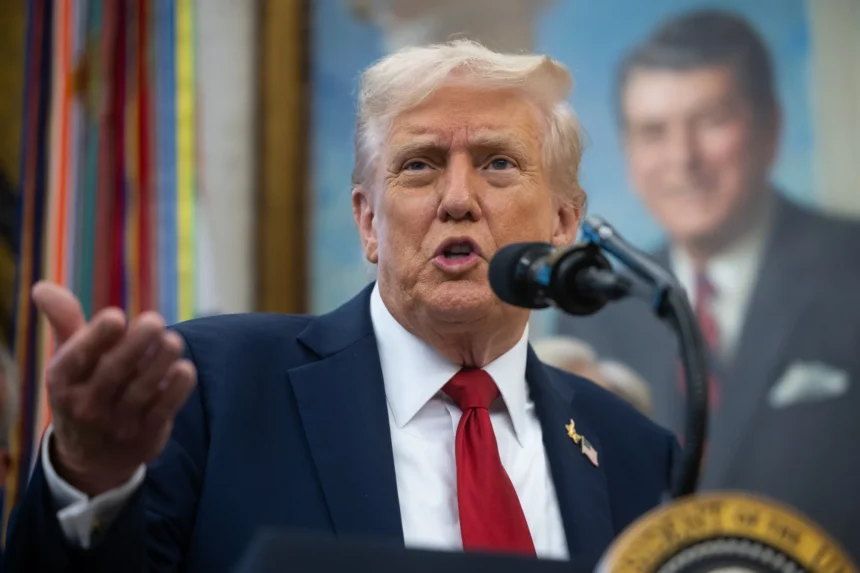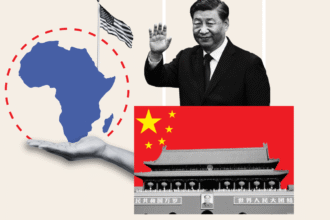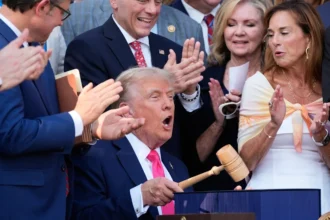As the United States grapples with a partial government shutdown, the Trump administration is reportedly exploring unconventional strategies to reshape federal operations and assert control over staffing priorities, in what some are calling “DOGE 2.0” — a tongue-in-cheek reference to the viral cryptocurrency and the administration’s willingness to experiment amid crisis.
At the center of the strategy is Russell Vought, acting director of the Office of Management and Budget (OMB), who is reportedly using the shutdown as leverage to push through more aggressive workforce reductions and reorganization plans. While critics label the move as opportunistic, supporters argue it represents a rare chance to streamline federal operations and reduce bureaucratic inefficiencies.
Shutdown as a Strategic Lever
The current federal shutdown, which has left numerous agencies operating at reduced capacity, has opened doors for the administration to implement policies that might be politically challenging under normal circumstances.
Vought, known for his conservative approach to federal staffing, is reportedly advocating for:
- Accelerated federal employee attrition through early retirements and voluntary departures.
- Streamlined hiring processes to replace select positions with more flexible contractors.
- Revisions to civil service protections, potentially enabling easier termination of underperforming employees.
“This is the rare moment when crisis meets opportunity,” said an anonymous senior administration official. “The shutdown provides political cover for changes that would otherwise face significant resistance.”
DOGE 2.0: More Than a Meme
The “DOGE 2.0” label, while playful, captures the administration’s approach: experimental, rapid, and willing to embrace public scrutiny. Some insiders suggest the name also hints at embracing decentralized decision-making principles, akin to how cryptocurrencies operate outside traditional financial oversight.
While Elon Musk and other tech innovators have popularized DOGE and other crypto ventures, the administration’s use of the term reflects a metaphorical embrace of radical disruption in federal workforce management rather than a direct link to cryptocurrency.
Public and Political Reactions
The initiative has sparked controversy across political lines. Labor unions and Democratic lawmakers have expressed concern that using a shutdown to restructure federal staffing sets a dangerous precedent.
“Shutting down the government to justify firing more employees is unprecedented and deeply troubling,” said Senator Maria Sanchez (D-NY). “It undermines morale, public trust, and the functioning of essential services.”
Conversely, conservative analysts argue that the approach demonstrates bold leadership and efficiency, especially at a time when the federal workforce has been criticized for inefficiency and bloated staffing levels.
Other Players in the Shadow of the Shutdown
Beyond federal employee maneuvers, the shutdown has also affected financial and tech communities. Entrepreneurs like Justin Sun, the founder of Tron, have been linked to discussions around alternative financing and blockchain projects during periods of market uncertainty. Popular culture references, such as “Splenda daddies,” have surfaced online, highlighting the peculiar mix of economic strategy and social media commentary that often accompanies high-profile federal maneuvers.
“These side stories underscore how attention shifts rapidly during government crises,” said Mark Reynolds, a political analyst. “People are looking for opportunity, satire, and innovation all at once.”
Implications for Federal Operations
Experts suggest that Vought’s push, if successful, could lead to long-term changes in federal operations, including:
- Increased reliance on contractors and private partnerships to maintain essential services.
- Revisions to civil service protections, potentially affecting thousands of employees.
- Acceleration of digital transformation initiatives, allowing smaller teams to handle workloads previously managed by larger bureaucracies.
However, skeptics warn that implementing such changes amid a shutdown carries risks, including service disruptions, legal challenges, and political backlash.
A Chance for Reinvention
The Trump administration’s approach highlights how crises can serve as a catalyst for organizational change. By framing the shutdown as an opportunity, officials aim to reshape federal employment, streamline processes, and embrace experimental management strategies — all under the spotlight of public scrutiny.
Whether this will succeed or backfire remains to be seen. Labor groups are preparing lawsuits, Congress may intervene, and public sentiment will likely play a decisive role in shaping the outcome.
Conclusion
The concept of “DOGE 2.0” in the Trump administration is less about cryptocurrencies and more about leveraging political and economic crises to pursue bold, transformative policies. From potential federal workforce reductions to experiments in efficiency, the shutdown has become a laboratory for high-stakes experimentation.
As Russell Vought and his allies press forward, the nation watches to see whether this crisis-driven approach will result in a streamlined, modernized federal workforce or a cautionary tale about the perils of opportunistic governance.














